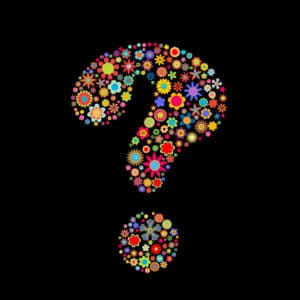What does gluten-free mean? It is still everywhere: labels, menus, podcasts, and apps. Let’s explain what gluten is and what gluten-free means in 2024. Let’s catch up on new information and clear up the confusion around all those gluten-free labeling terms.
What Is Gluten?
Gluten is a protein found in wheat, barley, rye, and products made with those ingredients. It is not digested well by everyone but does not necessarily cause problems in everyone. Eating gluten causes health problems in people with celiac disease or gluten intolerance/sensitivity.
What Does "I'm Gluten-Free" Mean?
The answer to this question depends on who you ask.
Celiac Disease
To someone with celiac disease, “gluten-free” means a lifelong, strict gluten-free diet. There is no veering from the diet, no crumbs of gluten, and no shared cooking surfaces or meal preparation areas. It is the treatment for celiac disease. For them, eating even minute amounts of gluten is dangerous. For someone with celiac disease, following the gluten-free diet is not a choice; it is their “medicine.”
Gluten intolerance/Gluten Sensitivity
For someone with gluten intolerance/gluten sensitivity, the diet may be followed strictly as it is for a celiac patient, but it is often a bit looser. They may or may not worry about cooking surfaces, shared cooking oil, or crumbs. Those small amounts of gluten may or may not affect them. The diet is typically followed because it helps them feel better. It can be followed in the long term if this is the reason. If the gluten-free diet doesn’t improve how someone feels, they don’t typically stick to it long-term.
The Fad Dieter
If following a gluten-free diet happens because a friend recommended it or it has a presumed health benefit, it may only be followed occasionally by that type of gluten-free dieter- when it is convenient. These gluten-free dieters don’t tend to stay on the diet long-term.
What We Know About "Gluten-Free"
- A gluten-free diet is not a fad for people with celiac disease or gluten sensitivity. Related Article: The Difference Between Celiac Disease and Gluten Sensitivity
- People with gluten intolerance are not usually reacting to wheat gluten, but rather other parts of the wheat that are sugars (carbohydrates) called FODMAPS Related Article Here: FODMAPS And The Gluten-Free Diet.
- Many “diets” are also gluten-free: *Keto, Paleo, Autoimmune Protocol Diet (AIP), Whole 30, Grain-free/Lectin-free. Many help with digestive problems. Related Article Here: Which Diet Is Best To Heal Your Gut?
- A gluten-free diet is not necessary for all people.
- Oreos are making a gluten-free version of their cookies- I know folks are happy about that one!
- Encouraging treatments are on the horizon for celiac disease.
- There is no test for gluten intolerance/gluten sensitivity. There is a test for celiac disease. Related Article Here: Testing For Gluten Intolerance And Celiac Disease
- Gluten-free bread tastes SO much better than it used to.
- Online shopping for gluten-free diets has skyrocketed and makes life easier for gluten-free dieters. Here are some resources you may not have heard of for gluten-free products. Related Article Here: Unique Online Shopping Resources For Special Diets
- There are more 100 percent gluten-free restaurants than ever, which makes dining out easier for gluten-free dieters. They need support now more than ever! Related Information: Worldwide 100 Percent Gluten-Free Restaurant Guide—1700 Listings—For Free!
- Choosing whole foods (minus gluten-grains) is always the best way to eat gluten-free.
- Gluten-free labels can be tricky, but progress is being made. More about this below
*not all versions of the keto diet are gluten-free. If purchasing products labeled “keto,” please read labels.
Related Article: Reasons People Follow A Gluten-free Diet
Gluten-Free Food Labels
What is the meaning of “gluten-free” on a label?
The gluten-free labeling rule requires manufacturers to label their product “gluten-free” to ensure it contains less than 20 ppm of gluten. This is the amount of gluten that is safe for people with celiac disease, an autoimmune condition activated by eating even small amounts of gluten.
However, people avoiding gluten for medical reasons still question whether products are genuinely gluten-free as labeled. They are confused by a variety of ambiguous labeling practices. Terms such as “no gluten ingredients “and “made without gluten” are now frequently seen on products.
Are Foods Labeled Gluten-Free Actually Gluten-Free?

If a product has a gluten-free label, is it genuinely gluten-free? Few studies address this question. A study published in the journal Food Chemistry looked to answer this question.
The FDA evaluated 275 different foods labeled gluten-free. Their results were encouraging. Only three of 275 products contained more than 20 ppm of gluten (1.1%). Based on these numbers, manufacturers are doing an excellent job of ensuring their gluten-free foods are gluten-free. Three products measured contained more than 20 ppm gluten. I hope the FDA follows up with those companies to correct the issue.
Take-home point: Manufacturers are doing an outstanding job of ensuring products labeled “gluten-free “ are gluten-free.
Related Article-Click Here: Explaining The Meaning Of Gluten Free Labels
If A Food Is Not Labeled Gluten-Free, Can You Rely On The Ingredients?
If packaged food is not labeled gluten-free, yet the ingredients appear to be gluten-free, what are the chances it may contain gluten?
Gluten can be accidentally introduced into a product through cross-contamination. This can occur during production, preparation, transportation, or storage of ingredients and food products. The gluten from cross-contamination may be enough to cause illness in someone with celiac disease, wheat allergy, or gluten sensitivity. But how often does this happen? Can you rely on simply reading the ingredient list?
The FDA study analyzed whether consumers could rely on reading the ingredient list if the food was not labeled “gluten-free.”They evaluated 186 foods with no gluten ingredients but were not labeled gluten-free. Unfortunately, they included products containing oats. It has long been known that while inherently gluten-free, oats are frequently cross-contaminated with gluten. This is so well known that many companies specialize in producing certified gluten-free oats that are specially grown, harvested, and packaged to prevent contact with gluten.
In the results, the FDA study states that 19.6% of unlabeled foods with no gluten in the ingredients contained unacceptable gluten levels. But when we take oats out of the equation, only 4% of these products contained gluten.
Take-home point: If the ingredients appeared gluten-free and did not contain oats, 4% of products contained gluten.
That’s a small number. The risk is low but not zero. I recommend inquiring about manufacturing by calling the company on products you consume regularly.
Labels With Warning Statements

“No Gluten Ingredients” Or “Made Without Gluten Ingredients” Labels
These phrases are unfortunate loopholes in the labeling rule and are seen on many packages. These terms do not need to adhere to the labeling regulations, so their meaning is vague. The FDA did not evaluate products with these claims. It is recommended that you contact the manufacturer for products with these claims.
It is fair to assume there is a reason these products are not labeled gluten-free. Labeling a product gluten-free is a valuable selling point, so it should raise suspicion if the company deliberately uses a similar-sounding term to avoid regulation.
Perhaps the ingredients are not sourced from gluten-free manufacturers, or there is another unknown reason for concern. If the manufacturer cannot clarify your satisfaction, I recommend avoiding these products.
Take-home point: Avoid products labeled ” no-gluten ingredients” or “made without gluten ingredients” if the manufacturer cannot explain why they are not using a regular gluten-free label.

"Made On Shared Equipment" Or "Made In A Shared Facility"
Advisory warnings such as “made on shared equipment” or “made in a shared facility” are common. What do these mean, and how seriously should you consider them?
The FDA study found that if a food contained an advisory label such as “made on shared equipment,” 43% of the products contained unacceptable gluten levels. Again, if we take out products containing oats, we are left with only four products to evaluate that included an advisory label.
This is hardly a large enough sample on which to base a recommendation. On this point, further evaluation is needed. If the risk of cross-contamination is high, such as in a shared facility or production line for baked goods, it is wise to avoid these products. The risk may be lower for non-bakery products, where there is no aerosolized gluten, but it depends on many factors at the production facility.
Gluten-free shoppers often assume that advisory warnings on labels protect the company from a legal standpoint and are not related to the consumer’s actual risk. While this may be true in some cases, many companies do it to maintain transparency and protect the consumer from real danger.
When possible, it is best to contact the manufacturer to clarify the risk if it is unclear. Today, there are many safe gluten-free alternatives and countless naturally gluten-free foods available. Hopefully, other options will be available if a warning cannot be clarified.
Take home points: Take warning labels seriously.
Consider each product individually.
Contact the manufacturer for additional information if necessary.
What If The Product Is Gluten-Free But Contains Oats?
If the product contains a gluten-free claim, it must contain less than 20 ppm of gluten. If you are in the 8% of people with celiac disease who react to oats, any product with oats should be avoided.
Take-home point: These products should be safe unless you react to oats for other reasons.
Related Article-Click Here: Are Oats Gluten-Free?
Take Home Points
- We have learned a lot about what gluten-free means heading into 2021.
- The term gluten-free has a wide degree of interpretation. To some, it is their medication; to others, it is a passing fad. To the FDA, it is the law. The differences are vast. Please understand the seriousness of the diet for people with celiac disease or gluten intolerance/gluten sensitivity.
- For people with celiac disease, it is not a choice; it is their treatment.
- For the gluten-sensitive, it can be equally as problematic and affect their day-to-day life.
- Progress is still needed regarding labeling, but we should appreciate the work done to make gluten-free, packaged foods safe.
- It is important to remember that the healthiest foods are naturally gluten-free and have no packaging. Packaged foods should be a supplement to a diet that is based on whole, fresh foods.
- Fruits, vegetables, and many other unprocessed foods are naturally gluten-free and have benefits beyond the absence of gluten.





